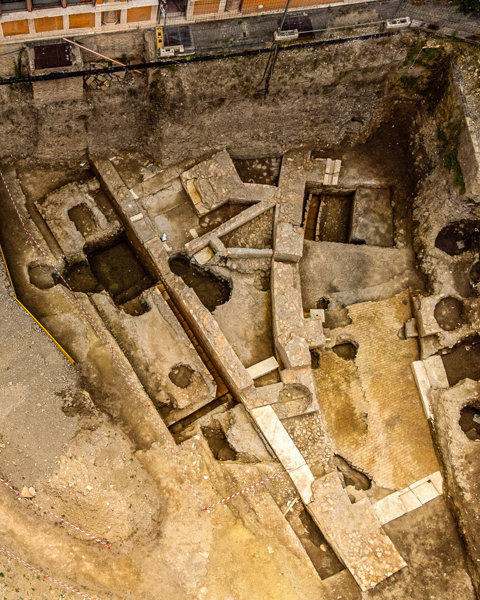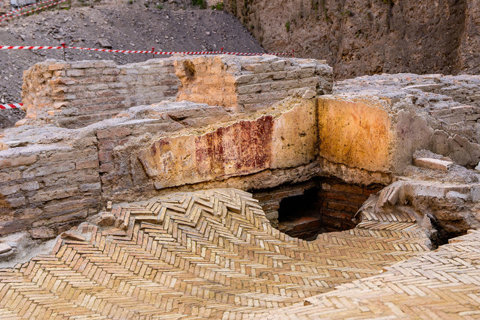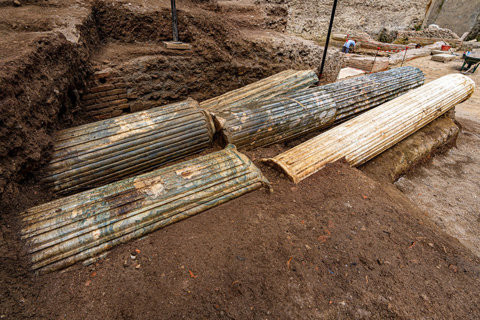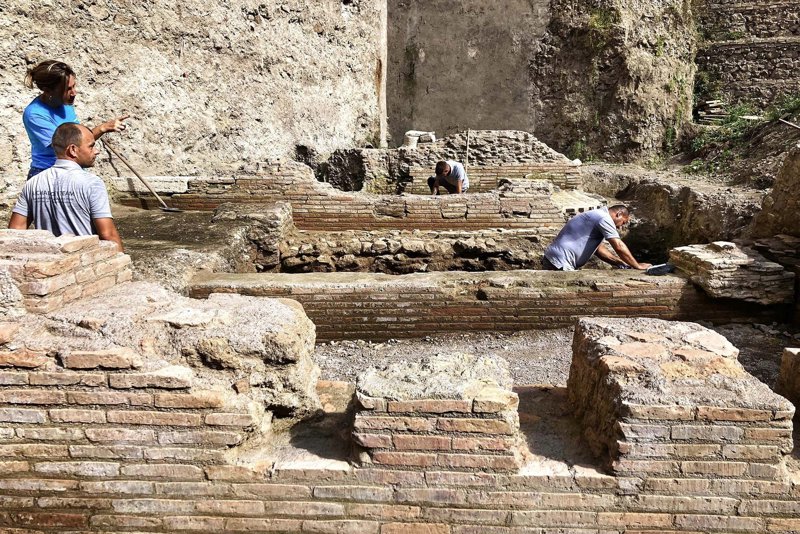Valentina di Giorgio
(ZENIT News / Rome, 08.16.2023).- In an unexpected turn of events, while excavations were underway for the construction of a parking lot in the courtyard of the 15th-century Renaissance architectural gem, Palazzo della Rovere, which houses the Equestrian Order of the Holy Sepulchre in Rome, archaeologists have unearthed a remarkable historical marvel: the partially preserved remains of Nero’s ancient theater, which had been hidden underground for over two thousand years, just a stone’s throw from the Vatican.
This luxurious imperial structure, previously known solely through ancient texts, has been identified thanks to a series of «highly consistent» archaeological clues, according to Alessio de Cristofaro, one of the archaeologists from the Municipality of Rome involved in the excavation. «Through this excavation, we were able to propose an identification that is based on a series of archaeological clues that are very consistent with each other and that lead us to identify this space as Nero’s ancient theater,» De Cristofaro stated.

Detail of the excavations that are being carried out in the theater of Nero. Photo: Soprintendenza Speciale Roma
Nero’s theater stands in an area historically associated with the horti (gardens) of Agrippina the Elder, the mother of Emperor Caligula, marking a significant point of the Julio-Claudian imperial family. Within this space, a majestic circus was constructed for the thrilling horse races of the era.
While authors like Pliny, Suetonius, and Tacitus had made reference to the existence of this theater in proximity to the Vatican, the density of buildings in the area, many possessing considerable artistic and cultural value, had traditionally hindered any attempts at archaeological excavations to confirm its location.

Remains of the pictorial decoration on one of the walls of Nero’s theater and part of the pavement, perfectly preserved. Photo: Soprintendenza Speciale Roma
Recovered fragments of Nero’s theater encompass the left side of the seating area (cavea) and the stage, featuring notable architectural elements like columns and intricate decorative motifs that attest to the building’s opulence and grandeur. «The rich architectural decoration, consisting of white and colored marbles, fluted columns of the Ionic order, stuccos covered with gold leaf, and the presence of a specific type of bricks, allow us to accurately date the building between the time of Caligula and Nero,» affirmed Cristofaro.
The excavations have also unveiled other concealed treasures, including glass cups, jars, ceramics, and relics left behind by pilgrims from bygone times. These artifacts, alongside skeletal remains and rosary bead molds from the Middle Ages, provide a window into Rome’s history over the centuries. The archaeologists stress the importance of considering that during the Middle Ages, this area attracted pilgrims from around the world who came to venerate the tomb of St. Peter, as per Christian tradition.

Columns from the Julio-Claudian period (27 B.C.-68 A.D.) found during the excavations of the theater of Nero. Photo: Soprintendenza Speciale Roma
Renato Sebastiani, another key member of the archaeological team, highlighted the uniqueness of this discovery. «The Middle Ages are not easy to find in this city. They are known through palaces, churches, and certain historical sources, but from a material standpoint, there aren’t many remains like the ones we have here, spanning from the 10th to the 15th century, revealing a portion of Rome’s economic and social history,» Sebastiani concluded.
In summary, the recent unveiling of Nero’s theater in close proximity to the Vatican, brought to light through excavations amid hotel construction efforts, has unearthed a rich history of imperial splendor and everyday life across the centuries in this iconic region of Rome. This archaeological discovery not only sheds light on the grandeur of ancient Rome but also reveals the lasting influence of the Middle Ages in the eternal city.



